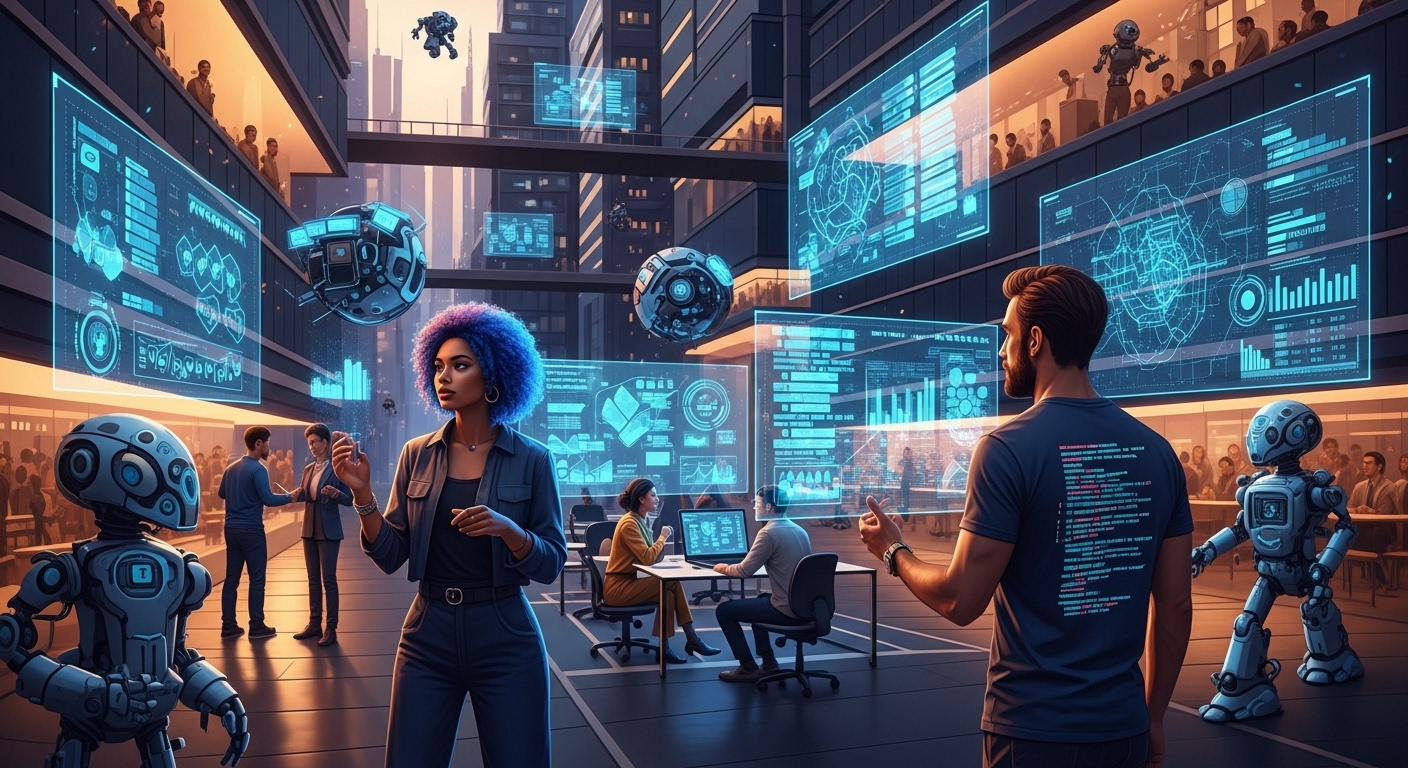While hardware provides the physical foundation for our digital world, it is “software” – the intricate sets of instructions, programs, and data – that truly breathes life into every device and system. From the operating system that greets you when you power on your computer to the complex algorithms driving autonomous vehicles and the personalized experiences offered by streaming platforms, software is the invisible architect shaping nearly every aspect of modern life. As of mid-2025, software development is not merely a technical discipline; it’s a rapidly evolving creative frontier, profoundly impacted by AI, cloud computing, and a global demand for increasingly intuitive and powerful digital experiences.
What is Software? The Intelligence Behind the Interaction
At its core, software is a collection of programs and routines that tell a computer or device what to do, how to do it, and when. Without software, hardware would simply be inert metal and silicon. It’s broadly categorized into:
- System Software: This foundational layer manages computer hardware and provides common services for application software. It acts as the mediator between the user, applications, and the hardware.
- Examples: Operating Systems (Windows, macOS, Linux, Android, iOS), Device Drivers, Firmware, Utility Software (antivirus, disk cleaners).
- Application Software: These programs are designed to perform specific tasks for the user. They run “on top of” the system software and use the computer’s resources to achieve user-defined goals.
- Examples: Word processors (Microsoft Word), web browsers (Chrome, Firefox), graphic design tools (Adobe Photoshop), video games, database management systems, productivity suites, and countless mobile apps.
- Programming Software: These are the specialized tools that developers use to write, test, and debug other software.
- Examples: Compilers, interpreters, debuggers, integrated development environments (IDEs), and various programming languages (Python, JavaScript, Java, C++, Go, Rust, Kotlin).
The Evolution of Code: From Manual Input to AI Co-Pilots
The journey of software development is a testament to relentless human ingenuity:
- Early Days (1940s-1950s): Programming involved tedious manual coding in machine language (binary code) and assembly language, requiring deep knowledge of hardware.
- High-Level Languages (1950s-1960s): The invention of languages like FORTRAN and COBOL revolutionized development, making code more human-readable and portable across different machines.
- The Software Crisis (1960s-1970s): As software grew more complex, projects were plagued by delays and overruns, leading to the formalization of “software engineering” as a discipline, emphasizing systematic and disciplined approaches.
- Personal Computing and the Internet (1980s-1990s): The rise of personal computers and graphical user interfaces (GUIs) made software accessible to the masses. The internet sparked an explosion in web applications, ushering in languages like HTML, CSS, and JavaScript.
- Mobile and Cloud Era (2000s-Present): Smartphones led to the “app economy,” while cloud computing transformed software delivery into a “Software as a Service” (SaaS) model, where applications are hosted online and accessed via subscription.
Software’s Profound Impact: Reshaping Global Society
The ubiquity of software has fundamentally reshaped nearly every aspect of our lives:
- Increased Productivity and Automation: Software automates repetitive tasks across industries, from manufacturing to finance, significantly boosting efficiency and reducing manual errors. Robotic Process Automation (RPA) in 2025 automates mundane tasks in areas like data entry, lead nurturing, and financial planning.
- Enhanced Communication and Connectivity: Social media, messaging apps, and video conferencing software have revolutionized how we connect and interact globally.
- Economic Growth and Innovation: The software industry itself is a multi-trillion-dollar global economy, creating millions of jobs and driving innovation across all sectors. Custom software solutions help businesses optimize processes, enhance customer experiences, and gain a competitive edge.
- Access to Information and Education: Search engines, online encyclopedias, and educational platforms are fundamentally software-driven, democratizing access to knowledge.
- Healthcare Advancements: Software drives medical imaging, patient record management, remote diagnostics (telemedicine), and drug discovery, improving healthcare delivery and outcomes. AI software in healthcare is poised to make a significant impact by lowering costs and improving efficiency.
- Entertainment and Media: Streaming services, gaming engines, and content creation tools are entirely software-driven, transforming how we consume and create media.
The Future of Software: Key Trends in 2025
As of mid-2025, the software landscape is experiencing unprecedented dynamism, with several key trends:
- AI-Powered Development (AI-Ops/MLOps): Artificial Intelligence is transforming how software is built. AI tools like GitHub Copilot are widely adopted, assisting developers with real-time code suggestions, automating repetitive tasks (like code generation and documentation generation), and optimizing code for performance. This dramatically accelerates development (82% of respondents reported at least a 20% productivity boost in a 2025 survey) and improves software quality by predicting bugs and suggesting fixes. AI is also deeply integrated into automated testing, deployment, and monitoring (DevOps/MLOps), creating more efficient and resilient software delivery pipelines. AI-powered tools are also used for predictive analytics in project management to optimize timelines and resources.
- Low-Code and No-Code Development Proliferation: These platforms are democratizing software development, allowing individuals with minimal coding expertise (often called “citizen developers”) to build functional applications quickly using visual interfaces and pre-built components. Gartner predicts that low-code application development will account for 65% of all app development activity by 2025. The global low-code market is growing at a CAGR of 22.3%, with 70% of new applications by large enterprises expected to use these platforms by 2025. This trend addresses the shortage of skilled developers and speeds up time-to-market.
- Cloud-Native Architectures Dominating: Building applications specifically for cloud environments (cloud-native) and leveraging serverless computing (where developers focus purely on code execution without managing servers) is becoming the standard. Gartner estimates over 95% of new digital workloads will be deployed on cloud-native platforms by 2025. This approach enables unparalleled scalability, resilience, and faster deployment cycles. Modern languages like Go and Rust are gaining momentum for cloud-native development due to their efficiency and security features, powering critical tools like Docker and Kubernetes.
- DevSecOps and Security as Code: With increasing cyber threats, security is no longer an afterthought but is being embedded into every stage of the software development lifecycle. DevSecOps integrates security practices from design to deployment and continuous monitoring, making software inherently more secure. “Security as Code” means security policies and controls are managed and version-controlled alongside application code within DevOps pipelines, enhancing consistency and compliance. AI is further boosting DevSecOps by enabling predictive threat detection and automated vulnerability remediation. The global DevSecOps market is projected to reach $18.2 billion by 2032.
- Hyper-Personalization and Ambient Intelligence: Software is becoming increasingly tailored to individual user behavior and preferences, using advanced AI and data analytics to deliver highly relevant content, experiences, and recommendations across all applications. The trend of “ambient invisible intelligence” means software seamlessly interacts with the physical environment, making decisions based on real-time data from sensors without explicit user input, leading to highly responsive and personalized user experiences.
- Edge Computing Software: As more devices become “smart” (IoT), software running at the “edge” of networks becomes crucial for real-time data processing, reducing latency and enabling immediate decisions for applications like autonomous vehicles, smart factories, and remote healthcare. Edge AI adoption is projected to grow significantly, driving demand for edge solutions that support distributed processing and enhance security by keeping sensitive data localized.
- Ethical AI and Responsible Development: With the widespread adoption of AI, there’s a growing emphasis on developing software ethically, ensuring transparency, fairness, and accountability in AI models to prevent bias and build public trust. Organizations are focusing on implementing ethical AI frameworks, addressing data biases (especially as AI is trained on historical, potentially biased data), and ensuring explainability in AI decisions. This commitment to responsible AI development is becoming a competitive differentiator, with 80% of organizations reporting an ethical charter on AI development in 2025.
- Modern Languages and Frameworks: Python and JavaScript remain dominant due to their versatility and extensive ecosystems (TensorFlow, React, Node.js). However, newer languages like Rust (for security and performance in blockchain and embedded systems) and Go (for cloud-native and distributed systems) are rapidly gaining traction, addressing specific industry needs. Kotlin continues to be a preferred language for Android application development due to its concise syntax and interoperability with Java.
The software industry is a fundamental driver of global digital transformation. It’s an ever-evolving field where creativity meets logic, constantly pushing the boundaries of what’s possible. As we navigate the complexities and opportunities of the digital age, the continuous innovation in software development will remain paramount to shaping our future.

